Mother of the Movement: Remembering Bambara and the “African Bones in the Briny Deep”
By Guest Contributor on November 17, 2014By Chadra Pittman Walke
Remembrance has not escaped us. Trapped now in our smallest self, we, repositories of the remembrance of the way violated…that is our vocation to find…our healing self, we the black people…The remembrance is of a harsh time, horrid, filled with pains…It was left to the women to begin the work of the healing…”
—Ayi Kwei Armah, Two Thousand Seasons
We ask the blessing of the elders to begin. Sage burns, candles lit, water is poured on the Earth, sea birds fly above our heads and then the calling of the names: Goddesses, Priestesses, Queen Mothers always, Ancestors now, Warrior Women, “Witches in Dahomey” (Audre Lorde), Healers in Hausa, Spiritual Sanctified Soldiers in the Struggle. I call Nyabinghi, Harriet Tubman, Sojourner Truth, Nzinga, Dr. Maya Angelou, Dr. Pearl E. Primus, Miriam Makeba, Queen Mother Yaa Asantewa, Dr. Katherine Dunham, Ida B. Wells, Betty Shabazz, Fannie Lou Hammer, Queen Mother Moore, June Jordan, Odetta, Ruby Dee, Coretta Scott King, Dr. Dorothy Height, Carlota Lukumi, Dr. Mary Umolo, Audre Lorde. I invite you to join us in the celebration of the 75th anniversary of the birth our beloved sistah…TONI CADE BAMBARA!!!
It was “a harsh time, horrid and filled with pains.” Hearts and minds remember what textbooks do not convey. We came before Columbus” (Van Sertima). We, the women remember the blood shed from the wood shed from the shores of Fort El Mina to Fort Monroe—we resisted the violations, the “forced penetration” (June Jordan), the brutality of enslavement at every turn. From the drum calls in Stono to the marches in Montgomery across the Combahee River, courageous women and men making their way from the Congo to the Dismal swamp, navigating snakes and dogs, chasing night fall, going underground, these truth tellers and cultural workers were leading their people to back to themselves and to each other and to freedom, risking it all in the name of love, and truth and justice and equality. To those who never made it off the ships alive, women cutting down the strange fruit from Southern trees and burying the dead along the way, birthing babies and ideas, picking cotton and cutting cane, midwives of the Middle Passage, forced to feed the nation her milk while her children lay hungry; these are the Mothers of the Movement. Ashe.
I begin this Tribute to and celebration of Bambara with a ritual known as a libation. I call on these particular women who are now ancestors because when I think of how Bambara influenced my life and work; it was her writings on women and her connection to the ancestors that moved me to a broadened level of consciousness. While Bambara was connected to our overall human condition, of both men and women, she gave honor to the divine feminine. These women mentioned were the healers and the warriors; they fought, marched and died alongside the men on the shores, on the ships, in the streets in pursuit of freedom. Intentionally or not, the names of these women are left out of the conversations, left out of the board room meetings, left out of the acknowledgements, left out of the historical record, systematically strangled, confined to the kitchens and the bedrooms, not allowed to sit at the tables even though they were the ones who were given the task of preparing the meals. The oppressive nature of patriarchy, misogyny and sexism suffocates the contributions of these warrior women. Today, in celebration of this Black Woman, I invite our ancestors and Queen Mothers, back into the rooms, to sit at the table as we celebrate our dear Bambara.
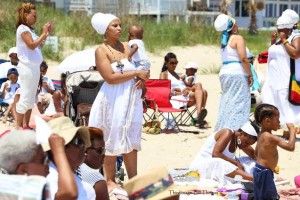
Mothers and Children – The Sankofa Projects Remembrance – June 2014 – Photo Credit Bill Thomas of Thirdiimages
My first introduction to the work of Bambara was when I was a college student. I was very familiar with the Black/ African American experience, presented most often from the male perspective. I understood all too well the DuBois’ concept of “double consciousness.” However, for me there were not just “two warring souls,” but three lurking in this body…an American, an African and Woman. I spent my early twenties trying to understand how to navigate in a world that consistently told me that I had to choose between my “race” and my “gender,” that the “personal was not the political,” as Audre said, that there was no room for Dr. Mobley’s construct of “both /and.” Society said, “I had to choose.” But how could I choose which part of myself to feed? If I focused on my gender, they said I was supporting the feminist agenda, which was typically European-centered and was not focusing on issues particular to my ethnicity/race. If I focused solely on race, could I effectively bring my particular concerns as a woman to the table and would these concerns be taken seriously in a meeting mostly of men?
When I found The Black Woman, I was home. The articles were unapologetically candid and beautifully written as was the woman who graced the cover of the book. Bambara taught me that “…the revolution for self was all about-the whole person.” I did not have to pick out parts of myself but could, instead, embrace my whole being. Bambara helped me formulate ideas about what it meant to be a woman of African descent and identify as a feminist, while occupying the same body. I thought this was revolutionary!
Embracing wholeness and all the intersections of her identities, Bambara was a mother, writer, scholar, Pan Africanist, Internationalist, activist, story teller, revolutionary, cultural worker, feminist and posthumously became what I lovingly refer to as Mother of the Movement of Tributes and Remembrance.
This storyteller and activist once said,
“I know we must reclaim those bones in the Atlantic Ocean. Do you know that there is not a plaque, a memorial, a day, a ritual, or an hour that is erected in memorial to those one hundred million bodies in the Atlantic Ocean? All those African bones in the briny deep. All those people who said “no” and jumped ship. All those people who tried to figure a way to steer, to navigate amongst the sharks. We don’t call upon that power. We don’t call upon those spirits. We don’t celebrate those ancestors. We don’t have a marker, an expression, a song that we use to acknowledge them. We have nothing to indicate that those are our people and they mattered. We willingly self-administer knock out drops. More horrendous is the fact that we don’t tap into the ancestral presence in the waters.”
These prophetic words were spoken by Bambara in 1987, at a Story Tellers Conference at Medgar’s College in Brooklyn, New York. On that day, Bambara ignited a flame within the hearts of many which still burns bright today. She cried out to the descendant community to remember the millions of African men, women and children who perished in the Middle Passage of the Transatlantic Enslavement Trade.
In 1989, it was Dr. Mary Umolo of Medgar Evers College and Brother Tony Akeem of the People of the Sun Collective who spearheaded the 1st Annual Tribute to the Ancestors. For the past 25 years, annually on the second Saturday in June, Coney Island has been dedicated in answering Bambara’s call to action. Masses of people descend upon Coney Island pay tribute and honor these African ancestors.
Seventeen years ago, co-founders of Charleston Remembrance, Deborah Wright and Osei Chandler, along with others of the African descendant community in South Carolina, began to “tap into that power.” As a collective, Charleston began to refer to the Tributes as Remembrance, and for the past 17 years, Charleston has been remembering. Solidifying their connection to the ancestors, Charleston adopted the Adinkra symbol, Nkonsonkonson, which means “we are linked in both life and death; those who share common blood relations never break apart,” which was a symbol artist Tom Feelings used in his book The Middle Passage: White Ships, Black Cargo. Before his death, Charleston was granted permission by Feelings to use his imagery for their programs and materials for Remembrance.
Around the globe and across the Atlantic, descendants of those “African bones in the briny deep” connected through this plea made by Bambara. It seems fitting that Tributes and Remembrance ceremonies are now celebrated internationally in Ghana, Tanzania, Ethiopia and Panama, and across the United States in Brooklyn, Charleston and Georgetown, South Carolina; Florida, Seattle, Washington, Oakland, California; St. Croix, Virgin Islands and Hampton, Virginia as the world benefitted from the exploitation of our enslaved ancestors. As Eric E. Williams points out in Capitalism & Slavery, “Slavery helped finance the Industrial Revolution in England. Plantation owners, shipbuilders, and merchants connected with the slave trade accumulated vast fortunes that established banks and heavy industry in Europe and expanded the reach of capitalism worldwide.”
In every city, every country, on every continent where African flesh was traded, annually on the 2nd Saturday in June, we all should be remembering and paying tribute. Slavery was a crime against all of humanity which needs to be atoned. Our goal for this grass roots movement, which began 25 years ago, is that it will be recognized as International holiday celebrated across the globe. As Bambara says, “These are our ancestors and they mattered.” Where ever you are in the world, we invite you to join this movement and “reclaim those bones in the Atlantic Ocean.” On the 2nd Saturday in June, go to the water, bring flowers, light a candle, pray/commune in the way that speaks to your spirit and remember them.
As we remember them, we drum, dance, pour libations, cast flowers in the ocean as offerings to Yemaya and Olokun, recite poetry, sing, share the stories on how we resisted, and celebrate the beauty and diversity of traditional African culture and spirituality. At 12 pm EST globally, we pour a communal libation connecting each of our ceremonies to the other. These expressions of African culture prove that Africans retained their culture and tradition.
Consistent with the findings of Melville Herskovits and Joseph Holloway, these Africanisms or cultural retentions survived in the Americas and in the diaspora. Groundbreaking research at the New York African Burial Ground (NYABG), which was a 17th century burial ground rediscovered in lower Manhattan, provided evidence of brutality and hardships of slavery and provided “evidence, biological and cultural of some of our roots,” according to Dr. Michael Blakey, former Scientific Director of the NYABG (1998), through the material culture left behind. Waist beads, filed teeth, pennies over the eyes, the burial practice of shrouding was proof as Maya Angelou states, “It takes more than a horrifying Transatlantic voyage chained in the filthy hold of a slave ship to erase someone’s culture.” Clearly, “all was not lost in the belly of the ship.”
In the belly of those ships lay African bodies, carried across the Atlantic for this trade in human flesh. Flesh soon became bones for those who perished during that “horrifying voyage” of the Middle Passage. According to the United Nations, the “transatlantic slave trade” is known to be “the largest forced migration in history, and incontrovertibly one of the most inhumane.” The ships and the ocean were the first burials for these African ancestors. The healthy and infirmed were thrown overboard, while other jumped resisting a life of enslavement. Noted historian Dr. John Henrik Clarke remarked that “if the Atlantic were to dry up, it would reveal a scattered pathway of bones, African bones marking the various routes of the Middle passage.” In her article “Burials, African Practices in the Americas,” LaTrese Evette Adkins says that “the ‘watery grave’ of the Atlantic Ocean or Middle Passage, was also a metaphorical conduit away from horrific peril. Water, in some African societies, signifies the divide between life and death…Therefore dying at sea could have been seen as a pilgrimage or departure to another existence as well as an escape from a horrific experience; hence while those who survived the Middle Passage had crossed over into bondage, those who died had joined their ancestors, going back to a spiritual, African experience.”
I began what would become my life’s work with ancestors eighteen years ago at the NYABG. I witnessed daily the profound connection which the descendant community had with these ancestors. They would visit the site, pray, pour libations, sit quietly alone or visit with the graves with others. The New York community claimed these bones as their own and I see a similar connection between the Remembrance and Tribute communities to these “African bones in the briny deep.”
In the 90s, I attended the Coney Island Tribute, and years later, I visited Charleston and participated in their Remembrance on Sullivan’s Island. After that visit, I knew that I had to start the tradition of Remembrance in Virginia. In Savoring the Salt, Linda Janet Holmes writes, “The South provided an ideal space for Toni to commune with ancestral spirits.” Like Bambara, I felt a need to commune and continue the work I began at the NY ABG with the ancestors. Recognizing the historical significance of the city of Hampton as the birth place of slavery in North America and also the place where the seeds of freedom were sown through the Contraband Decision, I felt it was imperative to begin a tradition of Remembrance here. With the assistance of Deborah, who had been orchestrating ceremonies for years by then, I was able to fulfill Bambara’s request and Hampton began the tradition of Remembrance.
These Tributes and Remembrance ceremonies are the burials, the funerals, the home-goings that our ancestors never received. My intention is that these ceremonies be cathartic, meaningful, inspirational, educational, informative, spiritual, celebratory, and historically relevant and offer aspects of healing. “Are you sure, sweetheart, that you want to be well?… Just so’s you’re sure, sweetheart, and ready to be healed, cause wholeness is no trifling matter. A lot of weight when you’re well.” We heal through dance, libations, through sharing of stories and shedding tears, through the drums, through the embrace of loved ones and new friends made, recognizing that we have gathered for the same purpose, on this day, at this hour as Bambara challenged us to do. We know that Remembrance is not a panacea for the ills that slavery has inflicted, yet it is my hope that through these rituals, that we can begin to redirect the pain of our fragmented past and move towards wholeness that Bambara told us about. Through Remembrance, we are building and healing our community and transforming those tragic memories into narratives of that will inspire and encourage us to continue to reach back, in the spirit of the Adinkra symbol Sankofa and embrace our past.
Since 2012, The Sankofa Projects has partnered with numerous community leaders, public schools and universities, non-profit organizations, and government agencies around expanding the conversation around slavery and resistance, creating educational programs and orchestrating Remembrance ceremonies in Hampton Roads and beyond. Annually devoted community members, as well as pillars have come out to support Remembrance—Dr. Mary T. Christian, Mayor George Wallace, Vice Mayor Linda Curtis, Dr. Joanne M. Braxton, Laini Mataka, Linda J. Holmes, the City of Hampton Parks and Recreation, and the Hampton History Museum. For the past three years, Baba Orimolade Ogunjimi of Ile Nago has performed libations and Ubuntu Dance Collective has gifted Remembrance with their powerful performances. The drumming community of Hampton Roads drums in honor of our ancestors, reminding us as Mary McLeod Bethune said, “The drums of Africa still beat in my heart.” Attendees travel from as far as New York to North Carolina to join us at Remembrance. Traditional African spirituality is represented with the Yoruba (Ifa), Kemetic, and Akan traditions with priests pouring libations and opening the way. We also pay homage to our Native American brothers and sisters during our ceremony, as they were the first inhabitants of this soil on which enslaved Africans toiled.
This past June, 2014 at our 3rd Annual Remembrance, nearly 370 people gathered at Buckroe Beach. Mayor George Wallace and the City of Hampton granted The Sankofa Projects a Proclamation, acknowledging the millions of African lives lost in the Middle Passage and recognizing the “many contributions our ancestors made to this American society.” This was a powerful gesture that the city where the institution of slavery began publically acknowledged this Maafa (terrible occurrence in Swahili). We had truly come full circle. The Proclamation presented by Vice Mayor Linda Curtis reads, “Whereas, Remembrance is a communal gathering spearheaded by the words of author, Toni Cade Bambara, which brings awareness to this often untold history around enslavement, honors the lives lost during the Middle Passage and acknowledges the impact which slavery made on our global community…”
I wonder how Bambara would feel about the impact that her words have had on our international community that so many have answered her call to remember. I call Bambara’s name often, as I feel compelled to tell people the story of how she became to be the Mother of the Movement of Tributes and Remembrances. As I burn the sage, I lift her name to the wind, ~Toni~ as I caste flowers to into the ocean ~ Cade~ as I pour water on the Earth ~ Bambara.
Through her life, writing and work, Bambara’s spirit and memory lives on in every word, every quote, on every page, through every connection she made to another. I am forever grateful to have known her through her writing and to have been inspired by her life’s work. Bambara continues to inspire many. Challenging us to move, act, remember, and transcend those places which would keep us hostage and afraid. She encourages us to be brave and whole.
I wish you a happy 75th, beloved. As the Mother of this Movement and supreme cultural worker, Toni Cade Bambara, you continue to make “revolution irresistible!!!”
Chadra Pittman Walke ~ Mother, Anthropologist, Writer, Advocate is the Founder & Executive Director of The Sankofa Projects, an organization which creates educational and cultural programs centered on the African Diaspora and 4 E.V.E.R. (End Violence End Rape), an activist organization that works to eradicate “rape culture” and end violence globally. A graduate of George Mason University, Chadra holds a Bachelor of Arts in Anthropology and minor in African American Studies. She is published under the American Anthropological Association and worked as Public Educator and Media Coordinator for the New York African Burial Groun Project. As an African Native American, Feminist, Womanist and cultural worker, identity and racial politics are central to Chadra’s work and research. As a community organizer, Chadra has lead and served on committee’s for Take Back the Night, Day of Unity-Night of Remembrance and will host an International Day for the Elimination of Violence against Women in November 2014, organized film viewings, panel discussions and traditional African Drum classes. Chadra has served as lecturer, moderator, consultant and creator of Remembrance ceremonies for the College of William and Mary’s Africana House, Hampton History Museum, Weyanoke Association, Contraband Historical Society, Norfolk State University’s 1619: The Making of America Conference, Hampton University, Association for African American Museums Conference, Project 1619, Inc., Fort Monroe Authority, National Park Services and Order of the Eastern Stars. Chadra serves as a Community and Civic leader in Hampton, Chairperson of the ALLIANCE, Reel It Out Queer Film Festival’s Committee for Hampton Roads, Ambassador for Dining Out for Life (AIDS/HIV fundraiser), Executive Media Consultant for ‘w.i.n.k. art ink and Volunteers at her children’s school.’ In 2014, Chadra was awarded the 2014 Promoter of Excellence Award for the City of Hampton. Chadra and her partner of 13 years have two amazing sons who are the light of her world.
You may also like...
8 Comments
All Content ©2016 The Feminist Wire All Rights Reserved

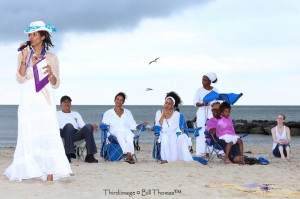
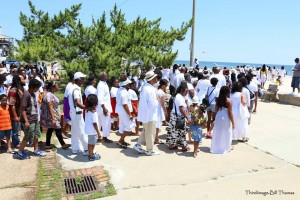
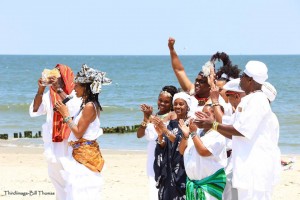

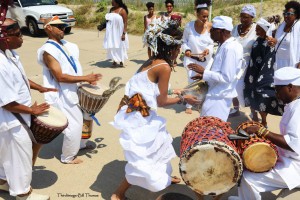
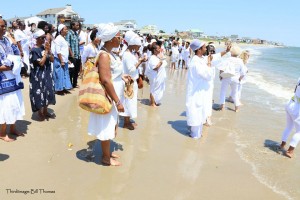
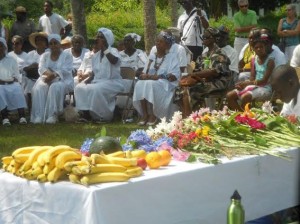
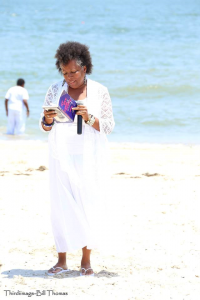
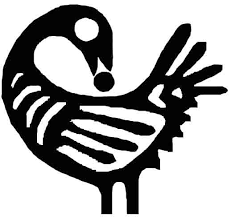
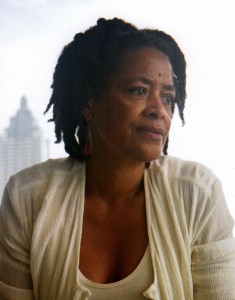
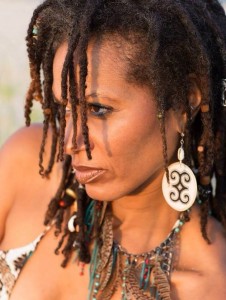
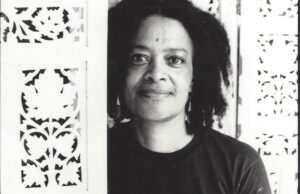
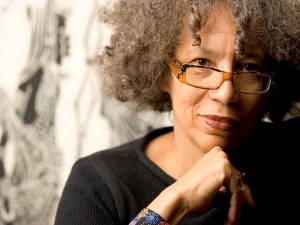
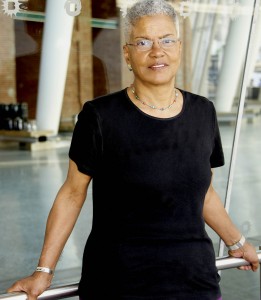
Pingback: thefeministwire.com published one of my Middle Passage Remembrance photographs | msbjpeart – Moments with Brenda Jennifer Peart
Pingback: Feminists We Love: Linda Janet Holmes [VIDEO] - The Feminist Wire | The Feminist Wire
Pingback: Afterword: Toni Cade Bambara's Living Legacy - The Feminist Wire | The Feminist Wire